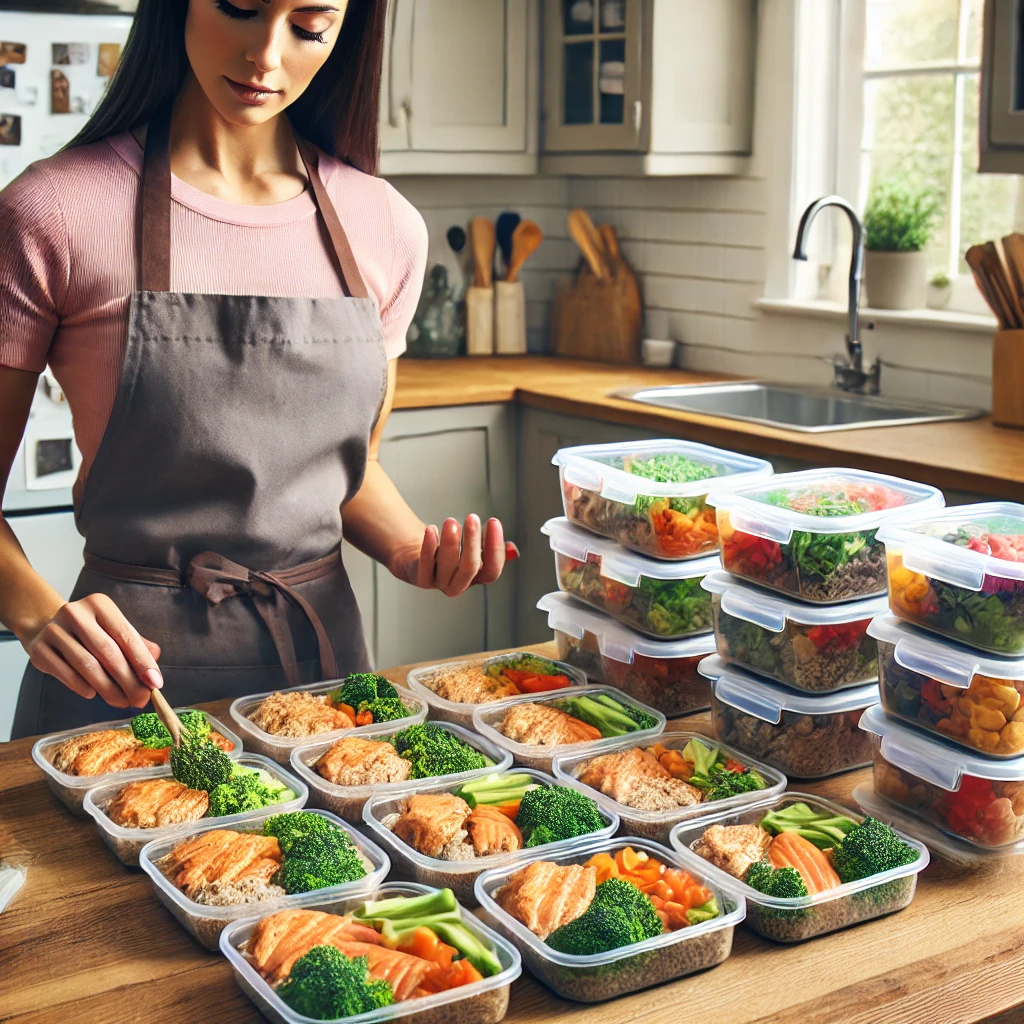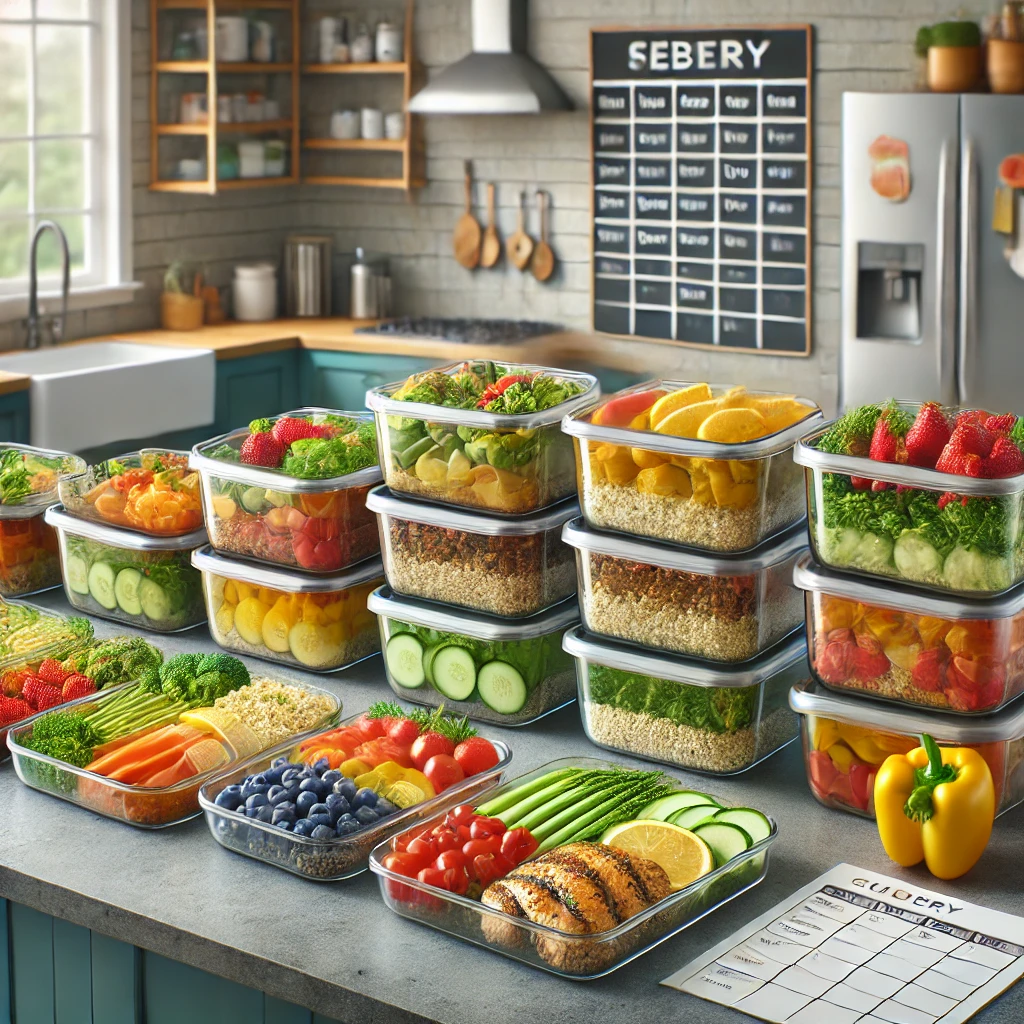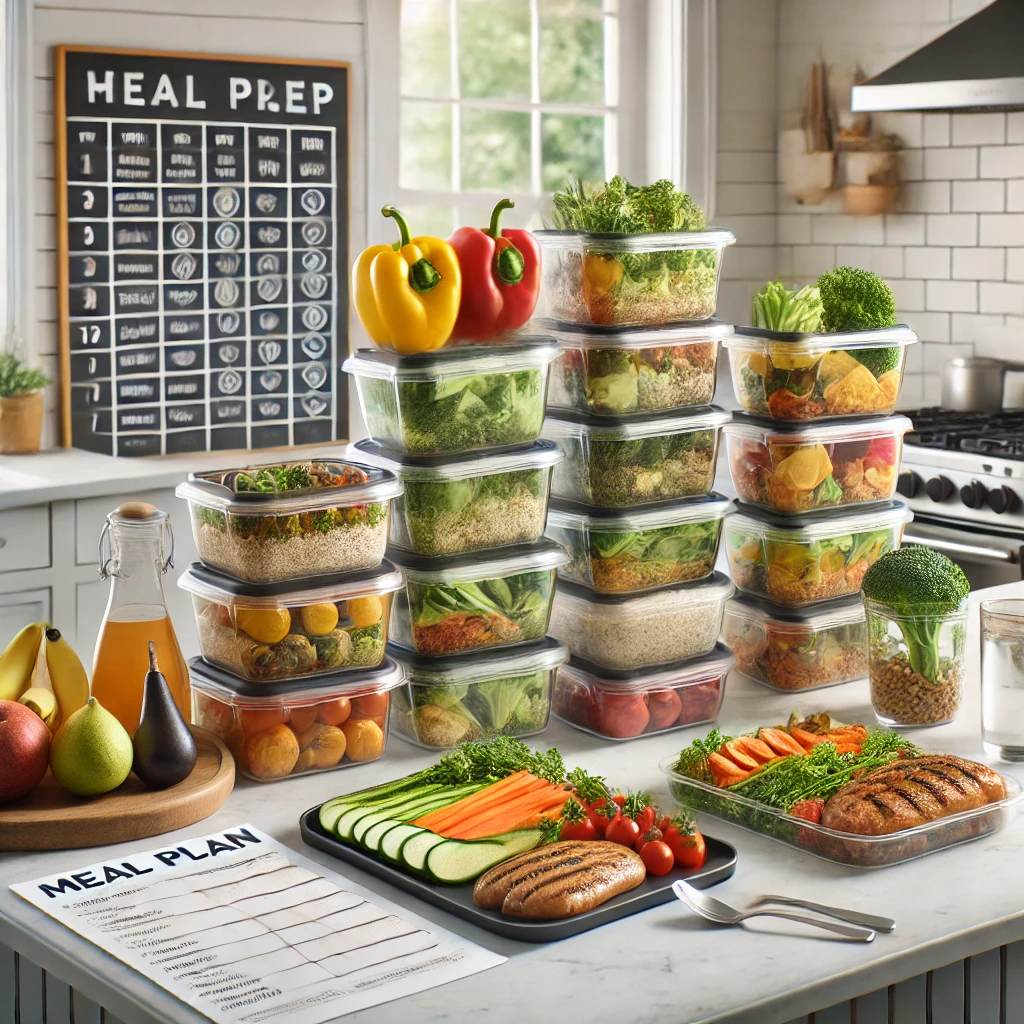Introduction
In today’s fast-paced world, finding time to cook nutritious meals every day can be a challenge. That’s where weekly meal prepping comes in. Preparing healthy meals in advance not only saves time and money but also helps you maintain balanced nutrition and avoid unhealthy food choices. This guide walks you through everything you need to know about healthy meal prep for the week, including tips, recipes, and a step-by-step plan.

Benefits of Weekly Meal Prep
Saves Time
Cooking in batches reduces daily kitchen time and streamlines your routine.
Promotes Healthier Eating
Pre-planned meals reduce the temptation to opt for takeout or processed foods.
Supports Weight Management
Portion-controlled meals help manage calorie intake and support your fitness goals.
Saves Money
Buying ingredients in bulk and reducing food waste leads to long-term savings.
How to Start Healthy Meal Prepping
Step 1: Plan Your Menu
- Choose balanced meals with lean proteins, complex carbs, and healthy fats.
- Include a variety of fruits and vegetables for nutrients and flavor.
- Consider meals that store and reheat well.
Step 2: Create a Grocery List
- List ingredients needed for each recipe.
- Group items by category (produce, grains, proteins, etc.) for efficient shopping.
Step 3: Choose a Prep Day
- Dedicate one or two days a week to cook and assemble your meals.
- Sundays and Wednesdays are popular prep days.
Step 4: Prepare and Cook
- Cook proteins like grilled chicken, tofu, beans, or fish.
- Roast or steam vegetables in large batches.
- Cook grains like brown rice, quinoa, or whole wheat pasta.
Step 5: Portion and Store
- Use BPA-free containers or glass meal prep boxes.
- Label containers with the meal name and date.
- Store in the fridge or freezer based on the meal’s shelf life.
Healthy Meal Prep Ideas
Breakfast
- Overnight Oats: Rolled oats with almond milk, chia seeds, and fruit.
- Egg Muffins: Baked eggs with spinach, mushrooms, and bell peppers.
- Smoothie Packs: Pre-portioned fruit and greens in freezer bags for quick blending.
Lunch
- Grilled Chicken Salad: Mixed greens, cherry tomatoes, cucumbers, and vinaigrette.
- Quinoa Bowls: Quinoa, roasted veggies, chickpeas, and tahini dressing.
- Turkey Wraps: Whole grain wraps with turkey, hummus, and veggies.
Dinner
- Stir-Fry: Brown rice, lean protein, and mixed vegetables with soy sauce.
- Baked Salmon: With sweet potatoes and steamed broccoli.
- Stuffed Bell Peppers: Quinoa, black beans, corn, and avocado.
Snacks
- Fruit and Nut Mix: Unsweetened dried fruit and raw nuts.
- Greek Yogurt: With honey and berries.
- Veggie Sticks: Carrots, cucumbers, and hummus.
Tips for Successful Meal Prepping
Keep It Simple
Choose easy recipes that don’t require a long list of ingredients.
Batch Cook Wisely
Make versatile ingredients that can be used in multiple meals.
Vary Your Meals
Switch up your proteins, veggies, and seasonings to avoid getting bored.
Invest in Quality Containers
Use leak-proof, stackable containers that keep food fresh and organized.
Food Safety and Storage
Refrigeration
Store meals in the fridge if they’ll be consumed within 3-4 days.
Freezing
Freeze meals that you won’t eat right away to preserve freshness.
Reheating
Reheat only once and ensure meals reach the appropriate internal temperature.

Conclusion
Healthy meal prepping for the week is a smart strategy for anyone looking to save time, eat better, and stay on track with their wellness goals. With a bit of planning and preparation, you can enjoy nutritious, homemade meals all week long. Start small, stay consistent, and watch your habits transform your health and lifestyle.





